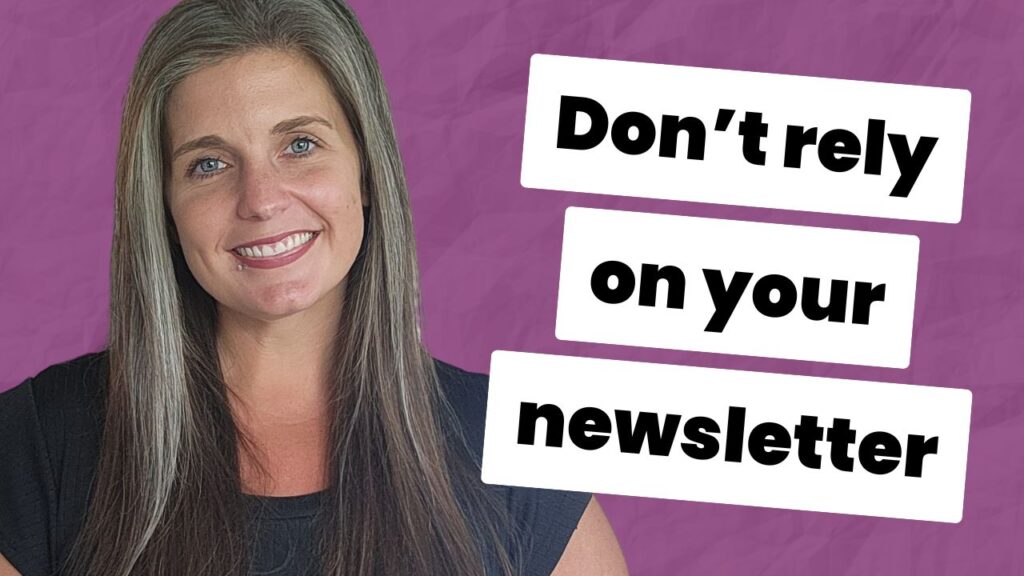Unpopular opinion: When optimizing emails for sales, you shouldn’t worship (i.e. prioritize) your email CTRs.
Before you shout “blasphemy!” – I hope you hear me out.
So have a quick listen and allow me to explain…
- why I (mostly) consider CTR a vanity metric
- what “trash clicks” are and why they throw off true email performance
- which email success metric matters most and
- what test to run to determine if split test winners are actual winners
Then… why not share your experiences in the YouTube comments section?
TRANSCRIPT:
When you’re optimizing emails, click-through rate isn’t the first thing you should really be evaluating your tests on, and here’s why.
Hi, I’m Paige. I’m a conversion copywriter, and I just finished reading an insightful email from email strategist Samar Owais. Maybe you’ve heard of her.
The topic of the email today was about micro conversions versus macro conversions. So, looking at it in terms of email, things like open rates and click-through rates versus total sales and total paid conversions.
I thought it would be a great idea to record a video on this because I’m getting ready to have this conversation with a client that I’m working with on email optimization.
So, the situation is we launched some new hypotheses and new emails for some flash sale campaigns. What we’ve seen so far is that open rates have increased significantly, about 10 percentage points, which is really great. That tells us that a lot more people are opening the emails, but click-throughs have dropped—not significantly, less than a percentage point, but enough to make me curious.
I still don’t yet have the data on how many conversions were actually seen through these campaigns in order to compare them to previous campaigns. So, I’m holding off on making any sweeping assumptions about performance because I want to bring this back to the conversation around macro conversions and micro conversions.
What we care about most in this scenario is driving signups and paid conversions for these campaigns.
In the conversion copywriting space and in the advertising space in general, you’ll hear the term qualified clicks. It’s the opposite of, of course, unqualified clicks, or what I like to call trash clicks. The difference between a qualified click and an unqualified click is that a qualified click is someone who has enough information to prepare them for the next step, whatever that conversion is going to be.
In the realm of short versus long copy, sometimes when you’re using a lot of short emails, for example, you’ll see more clicks and fewer conversions because people need to click through to get more information, but they don’t actually have the foundation they need to convert.
So, you’ll see a high number of clicks, but not all of those are qualified clicks because you haven’t prepared that prospect to convert.
Sometimes when you start using longer copy that’s doing more of that persuasion work, you’ll cut out some of your unqualified clicks because people who are not a good fit for your offer no longer need to click to satisfy their curiosity.
They can see from the copy you’re using in, say, longer emails that they’re not a fit or they’re not interested for whatever reason.
Your overall clicks might go down, but your total conversions could go up because more ideal buyers are actually clicking through and converting because they now have more information and details about your offer, why they need it, and how it’s going to impact their lives.
In this scenario, I can’t yet say if this is the situation, but the point I’m trying to make here is when you’re optimizing emails and you’re trying to evaluate whether or not your email tests are improving your actual goal, you don’t want to look at just your click-through rate.
In most scenarios, your click-through rate shouldn’t be your first measure of success. You want to first look at your macro goal: what is it you’re ultimately wanting to achieve with these emails? In this scenario, it’s sales, signups, and paid conversions.
You want to look at that first so you can evaluate whether or not your emails are actually driving more of your ultimate goal.
Because if they are, then you know a lower click-through rate is actually not a bad thing. You’re just cutting down slightly on unqualified clicks. Now, that doesn’t mean you can’t work to optimize your click-through rate. You absolutely should, but you want to make sure that you’re not prioritizing the click-through rate over the actual paid conversions.
This concept of macro goals versus micro goals is a mentality that you should adopt when you’re optimizing pretty much anything.
If you’ve been following me for very long, you know that I’ve shared the story about the sales page that was getting a 22% conversion rate. Then my client changed their traffic strategy, and the conversion rate dropped to 8%. The sales page didn’t change, but the conversion rate dropped. However, they actually started bringing in more sales with a larger volume of traffic converting at 8% than they were at the previous 22%.
In that scenario, we also want to consider macro goals: total sales versus micro goals like conversion rate of the page. How many people are actually purchasing based on the total number of prospects who are landing there? That’s just more proof that you should look at your macro goals and micro goals in that order: macro goals first, then micro goals, when you’re optimizing and determining whether or not your copy tests are actually improving the performance of your campaigns.
Also, we can’t forget when we’re comparing results from our copy tests to always run a statistically significant test with the results you get because you want to make sure your winners are actually winners.
Most of the email service providers and tools that you’re using aren’t doing this internally; they’re not running statistical significance. So, I recommend you use an online calculator for that.
As always, if you would like to partner with a conversion copywriter who looks at the big picture, understands macro goals and micro goals, and knows where to focus to ensure we’re actually driving revenue and sales and not getting caught up in vanity metrics or less important metrics…


